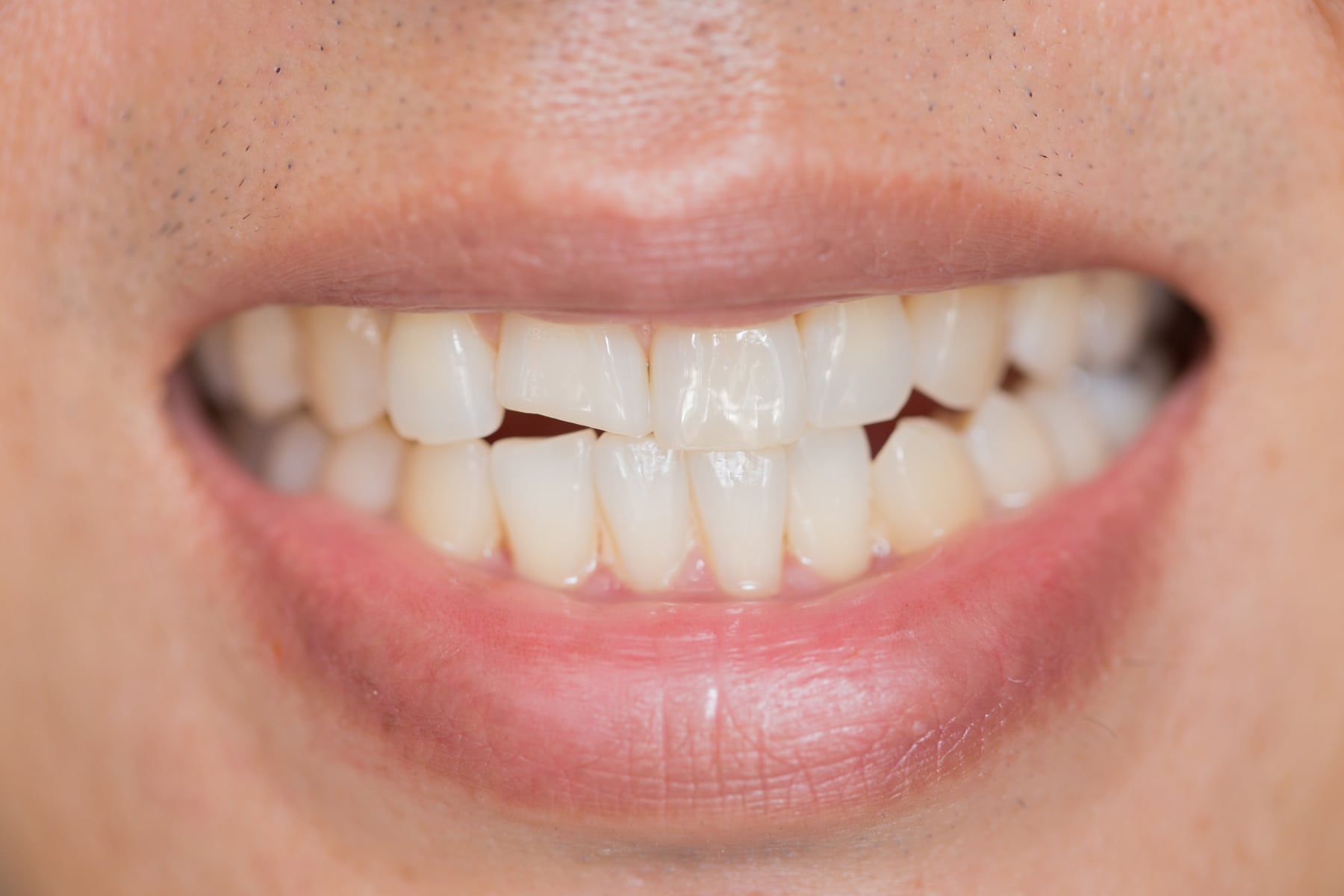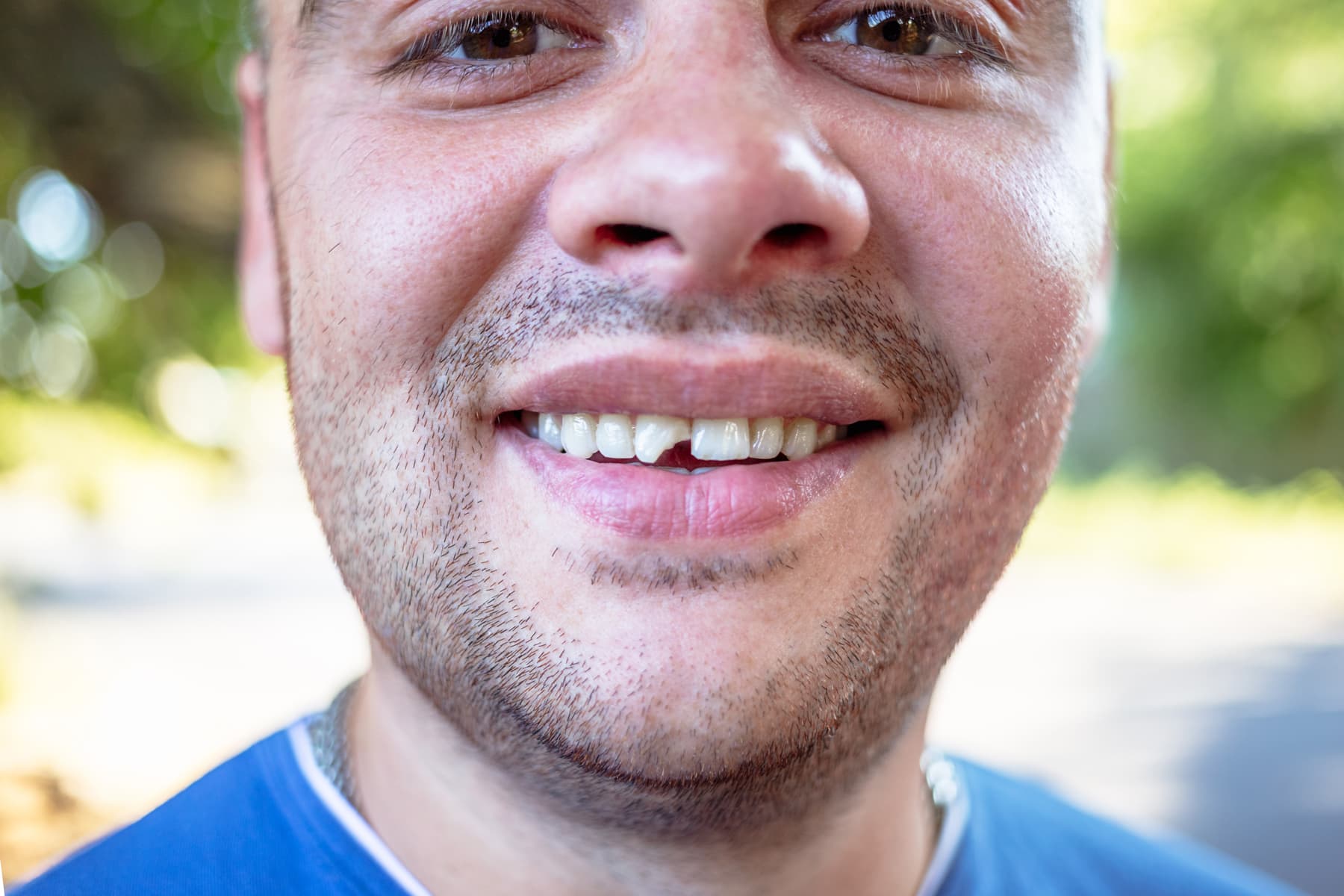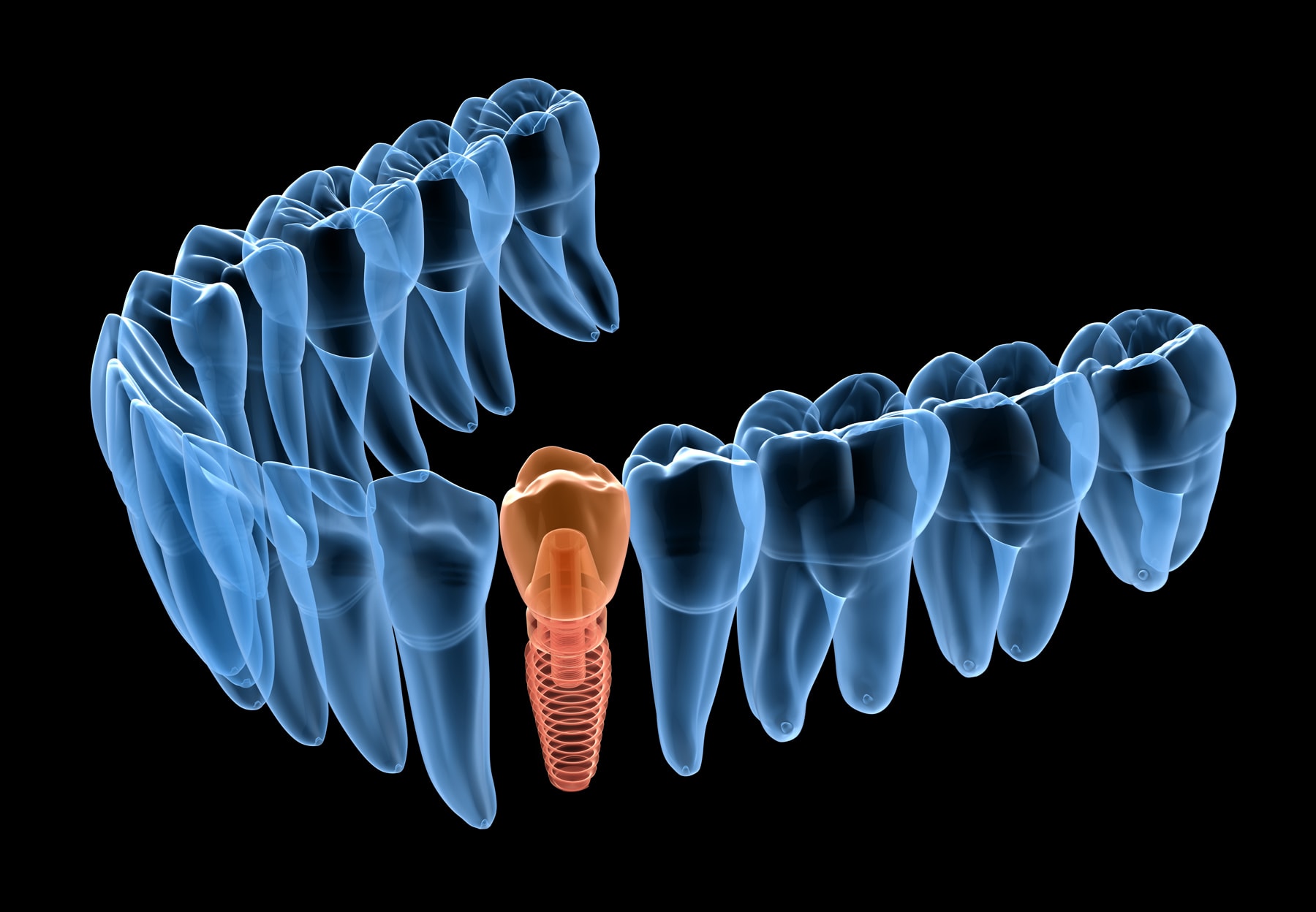The enamel on your teeth is some of the toughest tissue in your body, but it’s still vulnerable to chipping and even breaking.
Falls, blows to the face, using your teeth to tear open plastic or other packaging, or even biting down on hard foods can all cause a broken tooth.
If you have a chipped tooth or even a broken tooth, you should see a dentist as soon as possible.
There are a variety of ways to repair a broken tooth, from caps to veneers to crowns.
Your dentist will be able to figure out the best way to treat your broken tooth and repair the chipped teeth, and restore your smile to its original glory.
Are you in Melbourne area and have an issue with a chipped tooth?
Contact Dr Kasen for help with your chipped tooth.
If you chipped your tooth and you’re in Melbourne, Dr Kasen can help
Why Does a Tooth Break?
Teeth can break for a variety of reasons.
If you’ve fallen on your face, if you’ve received a blow or hit to the face, if you’ve used your teeth to rip open some kind of packaging (dentists will you to never do this but many of us do it anyways), or even if you have bitten down on something especially hard, you may break or chip a tooth.

Causes of a Broken Tooth
The causes of a broken tooth can vary, from injuries like a blow to the face or a fall to something less dramatic like biting down on an ice cube or piece of hard candy or other unyielding food, or even just grinding your teeth at night.
The 4 Major Causes of Cracked Teeth Are:
- Trauma
Physical i.e. from traumatic blow to the face. Whilst self-explanatory, these types of cracks can be fatal (for the tooth ie). On numerous occasions the crown of the tooth (the part of the tooth visibly above the gum) remains intact but the root has fractured. In the majority of cases the tooth needs to be extracted and replaced with an implant, bridge, denture or perhaps you may have to live with a gap in your bite or smile. - Grinding/Clenching
In the years gone by, I used to see this as one of the major causes of fractured teeth in middle aged and older patients. However, this is not the case anymore with major impact on younger people. Whether it is lifestyle related or greater stresses due to the connected worlds we live in, younger patients are now presenting with cracked teeth. Careful and thoughtful management is critical for greater long-term outcomes. - Age
Given that our teeth are in use 24 hours a day (we do periodically clench and grind whilst sleeping) it is natural to expect aging and hence usage will result in signs of wear and tear as well as cracks. - Large Fillings
Large fillings whilst are an immediate and cost-effective solution to restore a tooth, it almost always results in either the tooth cracking or the filling breaking.
What Are the Risk Factors for a Broken Tooth or Chipped Tooth?
If you play a contact sport like football or hockey, then you should always wear a mouthguard.
You should also avoid biting down directly on ice or things like hard candy.
Never use your teeth for anything but actually chewing food, such as holding onto objects, tearing open packaging like snack bags or similar items, or opening bottles.
Also, keep in mind that if you’ve broken or chipped a tooth previously, that tooth will be more vulnerable and more likely prone to breaking in the future even after it’s repaired, so you’ll want to treat that tooth with extra care.

Cavities and other tooth decay can also weaken tooth enamel, and so can having heartburn or acid reflux, along with eating significant amounts of sugar or acidic foods like coffee, fruits and fruit juices, and spicy foods.
Acidic foods and stomach acids all break down the enamel and leave the surface of the tooth exposed and more likely to chip or break.
Individuals older than fifty are also more at risk for chipped or broken teeth since tooth enamel weakens with age.
Diagnosing a Broken Tooth
Determining whether or not you have a broken or chipped tooth is usually pretty obvious – there’s a piece of your tooth missing and the broken spot will be jagged or sharp, and you’ll probably be in some amount of pain.
You can feel a chipped tooth by running your tongue or finger over the suspected broken spot. The area around a chipped tooth may be extra sensitive to hot or cold.
If you think you broke a tooth, call your dentist immediately for broken or chipped tooth repair.

What Should You Do If You Have a Broken or Chipped Tooth
If you have a chipped or broken tooth, you should make an appointment with your dentist as soon as possible.
It may take a day or even several days before you can manage to get an appointment, so in the meantime you should rinse your mouth, floss to get rid of any food particles that may aggravate the wound, and even use dental wax or temporary bonding material to keep the jagged edges of the wound from further irritating your mouth.
You can pick up these materials at your local drug store or pharmacy.
How to Care For a Broken Tooth or a Chipped Tooth
You should make an appointment with your dentist as soon as possible if you have chipped or broken a tooth.
In the meantime, take an over the counter medication like ibuprofen to reduce pain and inflammation, ice the affected area on the outside of your cheek or face, and consider using temporary dental bonding material or dental wax to coat the jagged edge of the tooth to prevent irritation to your tongue and gums until you can get to a dentist to have the tooth repaired.
What Are the Treatments for a Broken Tooth?
There are a variety of ways to treat a broken tooth depending on the severity of the chipping or break, ranging from simple bonds and porcelain veneers to caps or crowns and fillings.
Depending on the severity of the break, your dentist may even recommend that you get a root canal.

Bonding
Bonding or fillings is a common repair method for broken teeth or chipped teeth, especially small or less complicated chips.
Bonding a chipped tooth involves molding a composite material over the chip and the healthy area of the tooth; first your dentist will roughen up the remaining enamel so the composite will attach properly, then they will attach and shape the bond to create a natural looking cover over your chipped tooth.
Finally, the bonding is set with a blue light to harden the material.
Properly taken care of, bonds can last for around ten years.

Veneers
More severe damage or chips generally requires veneers or dental implants.
Repairing a chipped tooth, a bad veneer, or slightly chipped tooth for teeth with veneers means placing porcelain covers over a front tooth, resulting in a smooth natural look that’s identical – or even better – than your original teeth.
An experienced cosmetic dentist can install one veneer over just the broken tooth or several at a time to create a cohesive look, making veneers a great choice if you want to repair a chipped tooth while also upgrading the overall look of your smile.
Veneers can also be a good choice if you’ve already chipped or broken a bonded tooth (or if you want to replace your top 4 teeth with veneers) and they can last for ten to twenty years.
Take a look at Dr Kasen’s most recent before and after veneer photos of his patients.
Dental Crowns and Dental Caps
Like veneers, dental caps and crowns are porcelain covers for your teeth.
However, unlike veneers, crowns cover the entire tooth as opposed to just the front or the visible part of the tooth.
Generally, dental crowns are considered the best method for broken tooth repair when the break or crack caused a significant loss to the original tooth.
Crowns can fix your smile quickly while also preventing further damage, tooth decay, and pain from exposed nerves.
Crowns usually require two visits to the dentist’s office – the first to create the mold for the crowns and the second to cement it in place.
A temporary crown will likely be placed in the meantime to protect your broken tooth.
Dental Fillings
Dental fillings are a common way to repair a broken tooth or cavity, especially if it is a chipped molar or back tooth that is not very visible.
Metal fillings used to be one of the most common options, but there are newer materials like porcelain (LINK) that more closely resemble the look and feel of your natural teeth.
Root Canals
If the majority of your tooth is broken off but the roof remains intact, your dentist might recommend a root canal.
This involves placing a pin or post in the canal of your tooth in order to build up the structure enough so that a temporary crown can be placed and later a permanent one will be cemented over the post to restore your smile.
Types of Broken Teeth
A chipped tooth front might seem like a greater problem, but having a chipped or broken molar tooth or back tooth can be just as painful and problematic.

The 3 Major Management Options of a Cracked Tooth:
- The superficial crack
These cracks can be monitored until they become a concern. This is why regular examination and review appointments are critical. - The sinister crack
For any suspicious cracks, a dentist often recommend a minimal thickness porcelain restoration. Thankfully with advancements in porcelain and minimal intervention, we can remove cracks and return teeth to their natural strength and function. - The high-risk patient
For patients that are heavy grinders and clenchers, most dentists will recommend an occlusal splint. This is essentially a custom-made acrylic type of mouth guard that protects your teeth from the forces of grinding and clenching.
Chipped Front Tooth
Not only is a chipped front tooth painful, it is also aesthetically unpleasant.
For a chipped front tooth or incisor, or other highlight visible tooth, your dentist may advise bonding, veneers, or even dental crowns if the break is severe.

Broken Molar Tooth
Broken molars can be just as painful and troublesome as chipped front teeth, even though they are not as visible when you open your mouth.
Cracked tooth repair for broken molars tend to be fillings and the second lower molar is considered to be the most prone to chipping since it takes the most pressure when you are chewing.

How to Fix a Broken Tooth at Home
If you have a broken or chipped tooth, you should always see a dentist immediately to fix a chipped tooth.
In the meantime, there are some steps you can take to minimize the pain and lower the chances of further injury to the tooth until you can see a dentist.

What to Do If You’ve Chipped a Tooth (After Calling Your Dentist)
You can use temporary dental filling material, dental wax, or even a tea bag or sugar-free gum in case of emergency to cover the jagged edge of the tooth in order to protect your gums and tongue from cuts or scrapes.
Over the counter painkillers like ibuprofen can help to reduce inflammation and pain, and you can ice the outside of your face or cheek to reduce inflammation as well.
Using clove oil around the painful spots on your gums can also help numb the area around the chipped tooth.
If you’ve chipped a tooth or have a broken front tooth, you should also floss your other teeth in order to remove any food that may be caught between your teeth, which can place even more pressure on your broken tooth.
Avoid using the chipped tooth until it is fixed to chew and stick to soft foods, and wear a protective mouth guard if you’re playing sports or if you grind your teeth at night.
Have a chipped or broken tooth?
Make an appointment with your dentist as soon as possible that fixes teeth, your smile, and ease your pain.
And don’t worry – a chipped or broken tooth can be easier to fix than you think, and your smile will likely end up looking even better after your chipped tooth or broken tooth is repaired!
Are you located in Toorak, Melbourne, Australia and have an issue with a chipped tooth?
Contact Dr Kasen for help with your chipped tooth.


I don’t have dental insurance and hit my front tooth on a glass. Approximately how much would it cost to fix? I’m on social security disability so I have no extra money. Am I just going to live my life with a broken tooth?
it can cost anywhere from $300 to $5,000 depending on the method used to fix the tooth
Great article source to read. Thank you for sharing this info
I chipped my front tooth, and it is so tiny and mildly sensitive. You can’t even see the chip, and it isn’t causing any pain to my gums or tongue, should I still book an appointment?
i would book the appointment to make sure the tiny chip doesn’t develop into like a crack or anything or there could be an internal one get an x ray done
well i broke my front tooth reall bad and it is very sensitive what should i do?
My son has a large chip on his front tooth and we have found the piece that is broken off. As it’s Sunday we have a dentist appointment on Monday but how do I best store the piece that has broken off?
My front tooth is chipped a tiny bit and want to fix it.